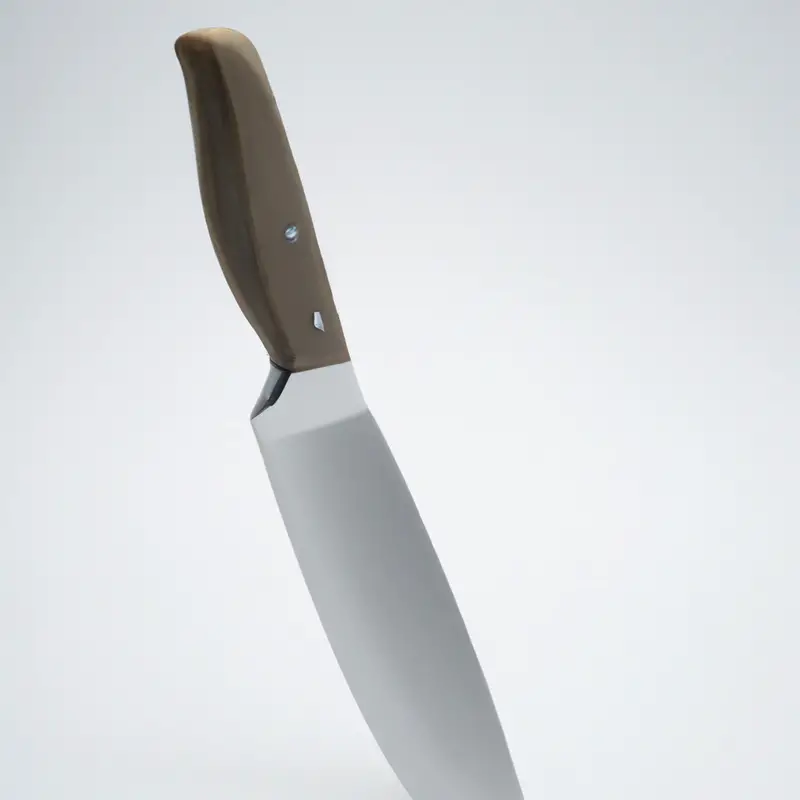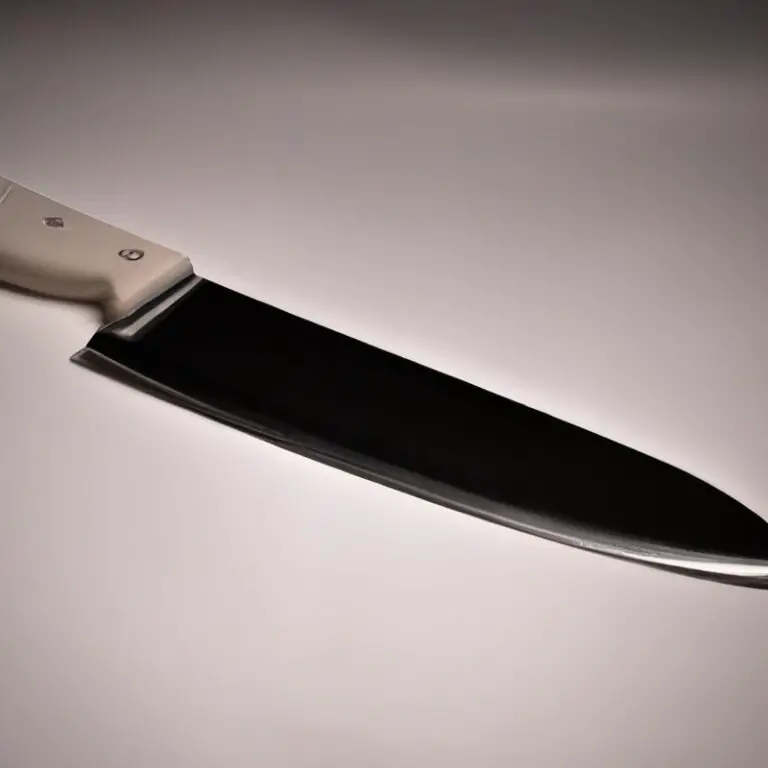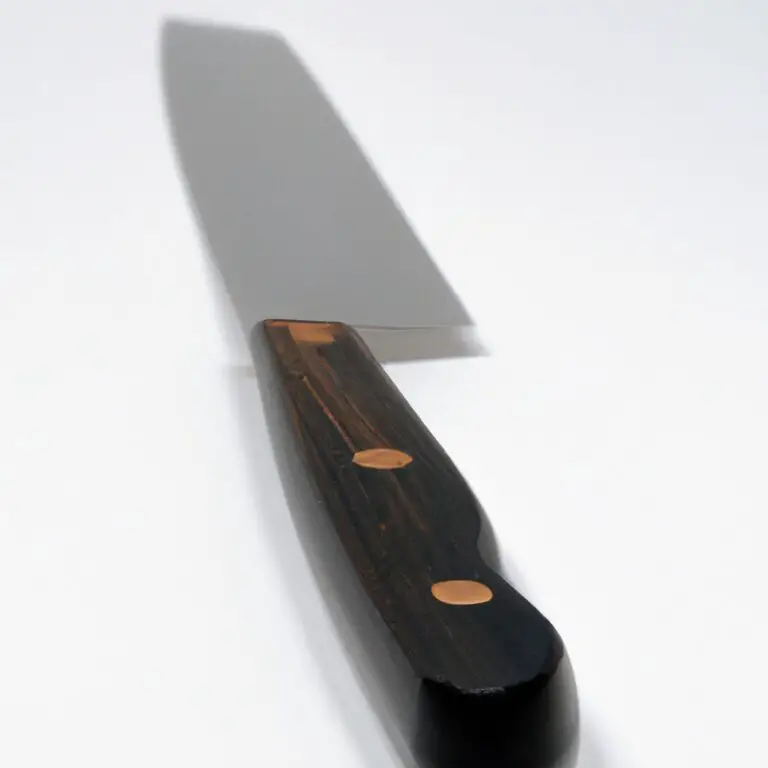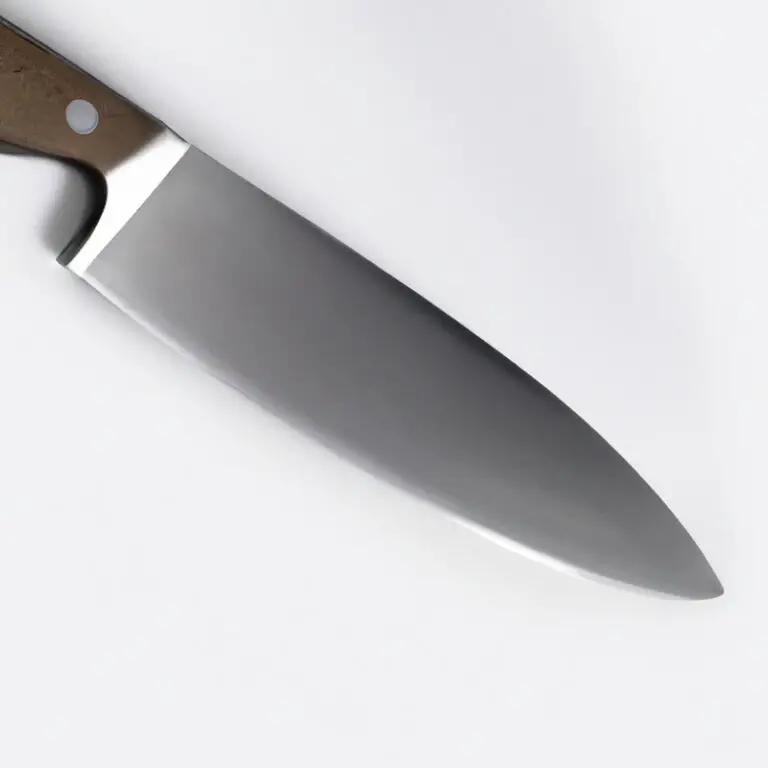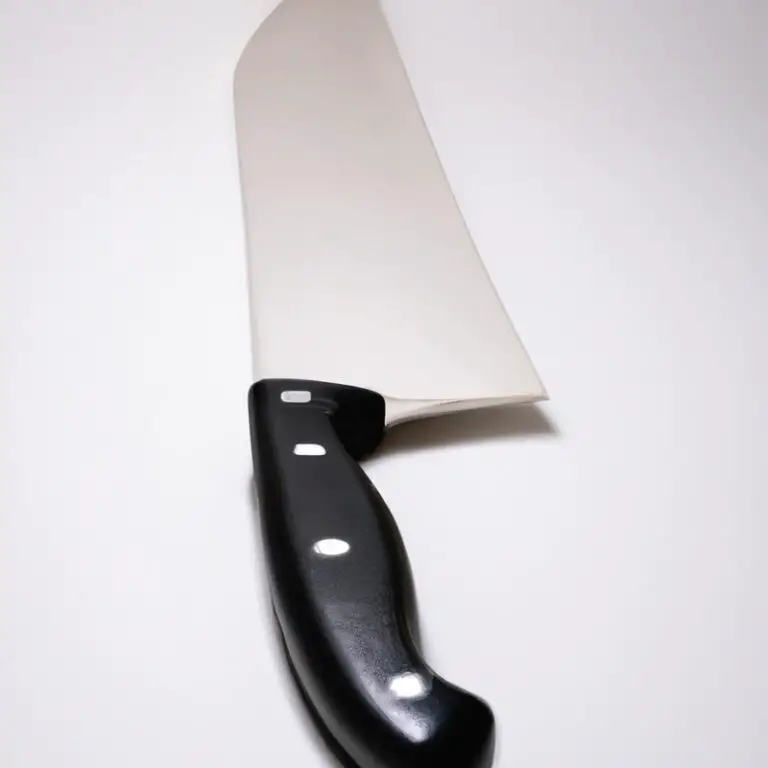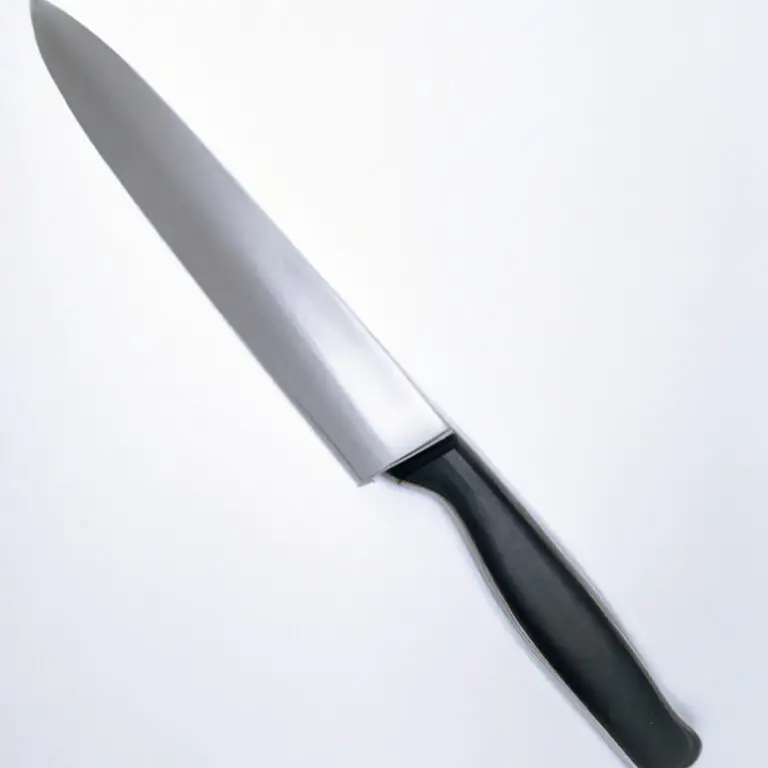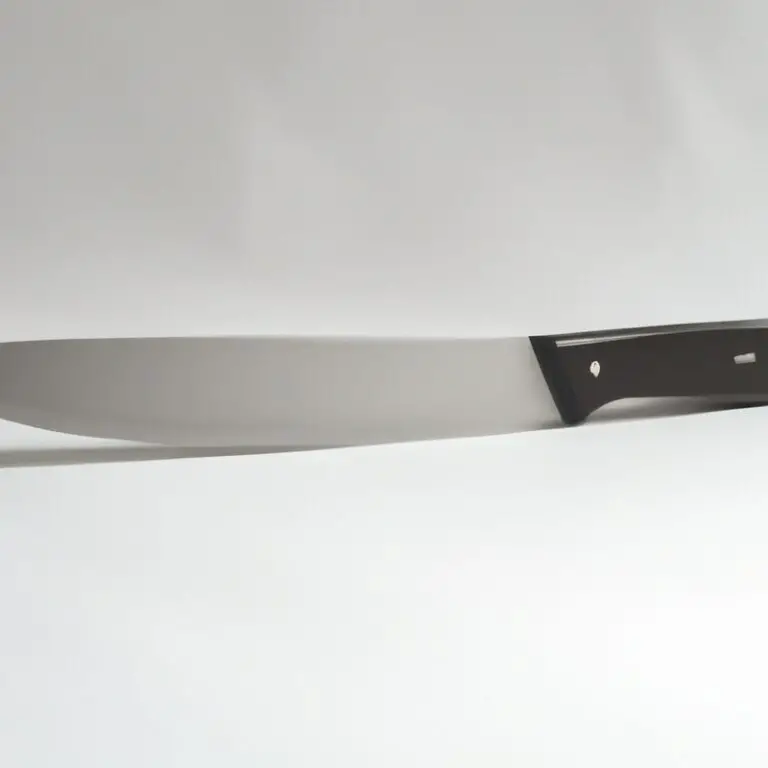How To Hold a Chef Knife For Precision Cutting?
Key Takeaways:
- Hold the chef knife with a firm grip using your dominant hand and tuck your fingertips under to avoid injury.
- Use the pinch grip technique for precision cutting by placing your index finger and thumb on opposite sides of the blade near the base.
- Practice proper posture and positioning by using your non-dominant hand to stabilize the food and keep your elbow close to your body for better control.
- Remember to always keep the blade sharp and to use a cutting board with good grip to prevent accidents.
Are you tired of struggling with your kitchen knife every time you prepare a meal? The truth is, a dull knife teamed with a wrong grip can ruin your cutting experience and affect the presentation of your dishes.
But fret not, mastering the art of holding a chef knife can transform your cooking game.
In this blog, I will guide you through the step-by-step process of holding a chef knife for precision cutting. From understanding the anatomy of the knife to honing your grip strength, you’ll be slicing and dicing like a pro in no time!
| Hold Type | Description |
|---|---|
| Pinch Grip | This grip is achieved by resting the thumb and the index finger on opposite sides of the blade, close to the bolster, and then curling the other three fingers around the handle. |
| Handle Grip | This grip is achieved by wrapping all fingers around the handle of the knife, including the index finger which rests on top of the handle. |
| Hybrid Grip | A combination of pinch and handle grip, where the thumb and index finger pinch the blade while the other fingers wrap around the handle. |
Understanding the anatomy of a chef knife to maximize precision cutting
To maximize precision cutting, it is crucial to understand the anatomy of a chef knife. Chef knives consist of a blade, bolster, tang, and handle.
The blade is the most important part of a chef knife, as it is responsible for making the cuts.
The bolster provides balance and stability to the knife while protecting the fingers from slipping onto the blade. The tang is the part of the blade that extends into the handle, providing balance to the knife.
Gripping the handle helps to control the blade and ensure accuracy while cutting.
Understanding the anatomy of a chef knife can help you choose the right knife for the task at hand and maximize its potential for precision cutting.
Mastering the pinch grip technique for holding a chef knife like a pro
To master the pinch grip technique when holding a chef knife, start by placing your thumb and index finger at the base of the blade where it meets the handle. Wrap your other fingers around the handle for stability.
This grip offers control, accuracy, and safety while cutting.
It ensures that the blade is balanced and allows for proper wrist movement. Practice this grip by holding the knife for a few minutes each day, and you will soon notice an improvement in your cutting skills.
Remember to always use a sharp knife and to keep your fingers away from the blade while cutting.
The correct hand placement on the chef knife handle for precise cutting
The correct hand placement on the chef knife handle is crucial for achieving precise cuts in your cooking. Your hand should be wrapped around the handle, with your thumb resting on the curved part of the blade, and your index finger placed on the back of the blade for stability.
This grip allows you to have better control over the knife’s movement and reduces the risk of injury.
Additionally, your grip should not be too tight or too loose, as either could result in imprecise cuts. With this technique, you can comfortably cut vegetables, fruits, meats, and other ingredients with ease and accuracy.
How to maintain a consistent angle for accurate slicing and dicing
To maintain a consistent angle while slicing and dicing, it’s important to keep the blade at a consistent angle throughout the cutting process. The ideal angle for a chef knife is between 15 to 20 degrees.
You can achieve this by keeping your wrist and forearm at the same level while cutting.
Avoid tilting the blade to one side or the other as this will affect the accuracy of your cuts. It’s also important to keep the blade sharp, as a dull blade will slip and slide, making it harder to maintain a consistent angle.
Practice slicing and dicing at a slow and steady pace until you feel comfortable with the correct angle.
With time and practice, you’ll develop muscle memory for the correct angle and achieve consistent cuts every time.
The importance of keeping your wrist straight while using a chef knife
Keeping your wrist straight while using a chef knife is crucial because it helps to maintain proper control and precision during cutting tasks. When your wrist is bent, there is a higher risk of losing control of the knife, resulting in uneven and potentially dangerous cuts.
Additionally, a bent wrist can cause strain and discomfort, leading to fatigue or even injury over extended periods.
By keeping your wrist straight, you not only improve your cutting accuracy but also reduce the risk of injury and strain. Remember to focus on maintaining a straight wrist throughout your cutting tasks, whether you are chopping, slicing, or dicing ingredients.
Proper finger positioning for stability and control while cutting
Proper finger positioning is essential for control and stability while cutting with a chef knife. The index finger and thumb should grip the handle while the other three fingers provide support and balance.
Keep your index finger straight along the side of the blade for better accuracy.
Avoid curling your fingers around the handle as it can cause discomfort and hinder your cutting ability. Remember to keep a firm grip but avoid gripping too tightly as it can lead to muscle fatigue and discomfort.
Tips for using a rocking motion to improve precision when chopping
When it comes to using a rocking motion for precision chopping, there are a few tips to keep in mind.
- Keep the tip of the knife in contact with the cutting board as you rock the blade back and forth.
- Use a smooth, fluid motion to avoid jerky movements that can compromise accuracy.
- Pay attention to the size and shape of the ingredient you’re chopping, adjusting your rocking motion accordingly.
- Use your non-dominant hand to hold the ingredient steady and provide extra support while chopping.
- Practice chopping at different speeds and pressures to develop a feel for the rocking motion and improve your overall precision.
By mastering the rocking motion technique, you’ll be able to chop ingredients quickly and accurately, making your time in the kitchen more efficient and enjoyable.
Avoiding common mistakes when holding a chef knife
When it comes to holding a chef knife, it is important to avoid common mistakes that could result in injury or inaccurate cuts. One common mistake is gripping the knife too tightly, which can lead to hand fatigue and lack of control.
Another mistake is holding the knife too close to the blade, which can affect your balance and precision.
To avoid these mistakes, it is important to use the pinch grip technique and place your fingers on the handle for stability. Additionally, keeping your wrist straight and using a rocking motion can improve precision while cutting.
Practice regularly to improve your technique and always prioritize safety to minimize the risk of accidents.
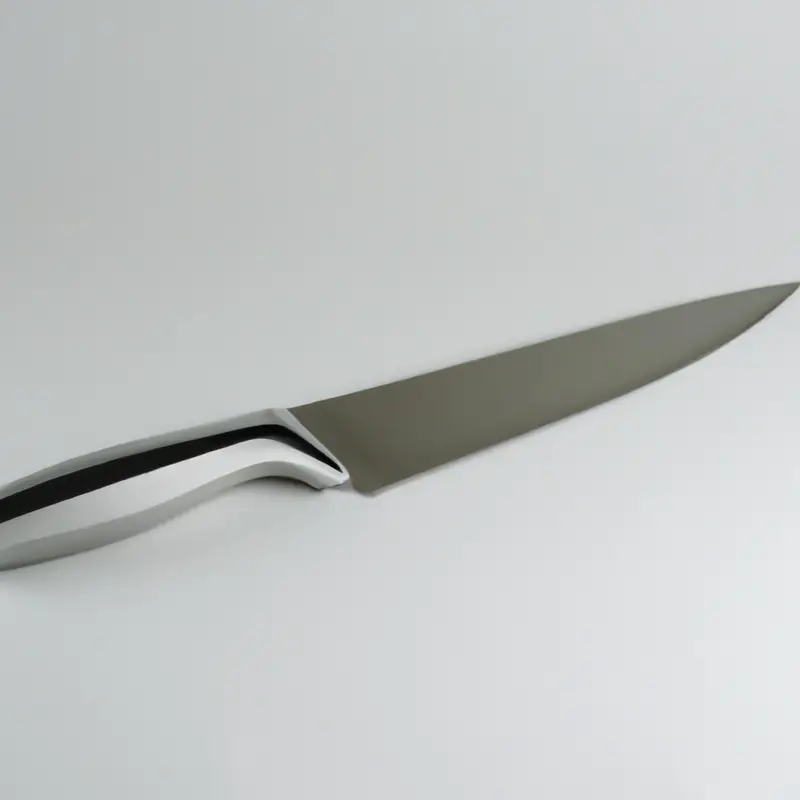
Enhancing your cutting skills through regular practice and honing
Enhancing your cutting skills through regular practice and honing is essential for anyone who wants to become a proficient chef. The more you use a chef knife, the more muscle memory you develop, making cuts more precise and effortless.
Consistent practice builds hand strength and improves technique, developing the ability to control the cutting angle, force, and grip.
It’s crucial to find a steady practice routine that works for you and actively take opportunities to test and improve your skills. By regularly practicing and honing your cutting skills, you can become more confident and effective in the kitchen.
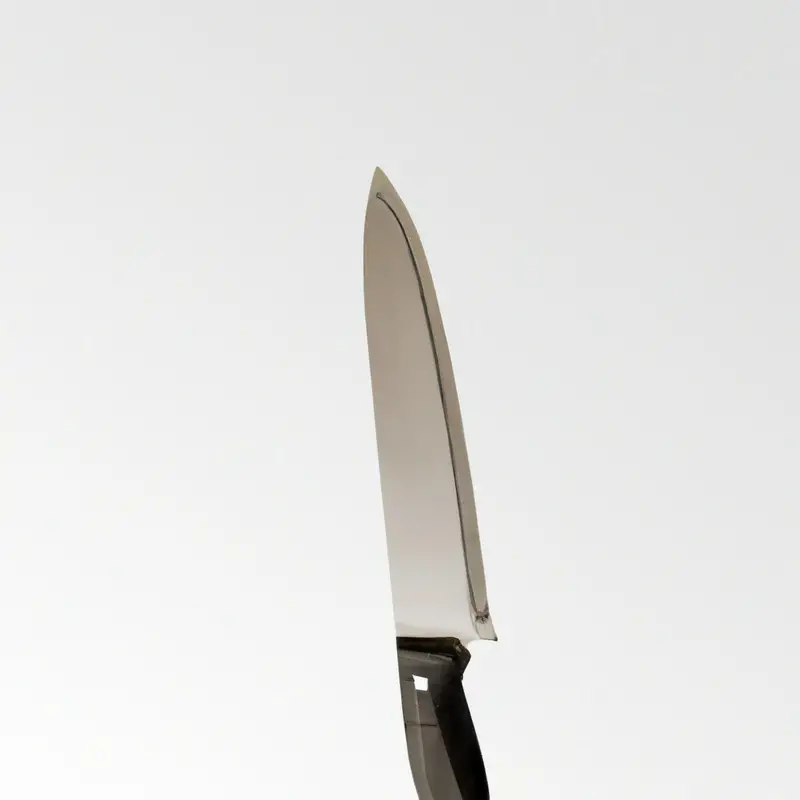
Improving your grip strength to handle more challenging cutting tasks
Improving your grip strength is essential for anyone who wants to handle more challenging cutting tasks. A strong grip not only helps you hold the knife firmly but also increases your control and precision during the cutting process.
To improve your grip strength, you can incorporate some simple exercises into your daily routine, such as doing hand grippers, finger push-ups, and wrist curls.
You can also use a grip strengthener tool to add resistance to your training. Remember to start slowly and gradually increase the difficulty level as your hand and wrist strength improves.
With time, you will notice a significant improvement in your grip strength, which will translate into better knife handling abilities and more precise cutting.
Using different grips for various knife cuts and techniques
Using different grips for various knife cuts and techniques is essential for achieving precise and efficient cuts. For heavier tasks like chopping, a firm grip on the handle is recommended, while lighter cuts like filleting may require a looser pinch grip.
When slicing through harder ingredients, such as root vegetables, a grip with the thumb on the blade’s spine can aid in applying more pressure.
Techniques like the Japanese Santoku knife’s two-handed grip offer a more balanced cutting experience for intricate tasks like mincing herbs. Experimenting with different grips and techniques will help you find the best grip for each cutting task, leading to more effective and precise cuts.
Adapting your knife-holding technique to accommodate for different ingredient textures
Different ingredients have different textures that require adjusting your knife-holding technique for effective cutting. For example, hard, dense vegetables like carrots and beets require a firm grip on the handle, while softer, delicate items like herbs and tomatoes require a lighter touch.
Adjusting the amount of pressure you apply and the angle at which you hold the knife can make a significant difference in your cutting precision.
It’s crucial to practice and experiment with different techniques to become comfortable with various textures and refine your knife skills. Always prioritize safety and be mindful of the ingredients you’re cutting to avoid accidents.
The best practices for cleaning and caring for your chef knife to keep it sharp
To keep your chef knife sharp and functional, proper cleaning and care practices are crucial. Here are some best practices you should follow:
- Wash your knife immediately after use with warm, soapy water. Avoid using abrasive sponges or cleaners that can damage the blade.
- Dry the knife with a soft cloth before storing it. Moisture can lead to rust and corrosion, which can damage the blade and affect its sharpness.
- Store your knife in a knife block or on a magnetic strip to protect the blade and prevent it from dulling by rubbing against other utensils.
- Use a honing rod regularly to maintain the blade’s edge. This will help to straighten and realign the blade’s edge without removing any material.
- Sharpen your knife regularly. Professionals recommend sharpening your knife once or twice a year, depending on how often you use it.
By regularly cleaning, drying, and storing your chef knife properly, using a honing rod, and sharpening it when necessary, you can extend the life of your knife and keep it sharp for years to come.
Incorporating knife skills training into your culinary education or practice routine
Incorporating knife skills training into your culinary education or practice routine is crucial for improving your precision cutting ability. Enroll in a culinary course focused on knife skills or watch online tutorials to learn new techniques and correct any bad habits.
Practice cutting different ingredients regularly to enhance your skills and maintain muscle memory.
Incorporate honing and sharpening your knife into your routine to keep it in its best condition. With regular training and practice, you can become a skilled and confident chef with exceptional cutting skills.
Final Verdict
With these tips and techniques in mind, you now have the knowledge to hold a chef knife like a pro. Remember to prioritize safety by using proper hand and finger positioning, maintaining a straight wrist, and avoiding common mistakes.
Regular practice and honing your skills will not only make you a better chef, but it will also improve your confidence in the kitchen.
By incorporating these best practices into your culinary education or practice routine, you will master the art of precision cutting and elevate your cooking to the next level. So, go ahead and grab that knife with confidence, and remember to always prioritize safety and precision.

